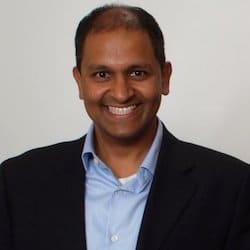Q. Is IoT a buzz or a reality?

A. A little bit of both, as devices were always being connected and automated. We’re hearing all about smart things these days-and how these connected devices are multiplying in our modern world. Whether we call it Internet of Things (IoT) or not, there’s no denying that these intelligent things are here to stay.
At Maxim, we see IoT as an opportunity for you to solve problems in new and better ways. We deliver technologies that help create innovative solutions. From a design perspective, smart, connected things commonly require sensing, processing, communication, power, and security-all areas where Maxim can help.
It is typical to over-estimate the effect of a technology in the short term and underestimate its impact over the long term. Devices were always being connected to one-another in the past too. Factories were always automated. What seems to have happened recently is that this automation has started happening at a larger scale at the edge and suddenly factories are beaming their data and reports to offices across the globe with easier access to cloud computing. Another key trend is that more intelligence is being added into sensors and I/O to make decisions at their level without contacting the main controller. This enables higher throughput and adaptive manufacturing.
Q. Any specific product categories that are experiencing higher interests or sales because of the Industrial IOT (aka Manufacturing 4.0 trend)?
A. We are seeing a broad demand for multiple product families at Maxim driven by Industry 4.0. Clearly Maxim is a power powerhouse and with every system needing power supplies, we are seeing an insatiable demand for our innovative voltage regulators, system protection, and supervisors that enable factory operators to reduce their expenses and downtime while improving output resulting in higher profits. Industry 4.0 also resulted in multiple new interfaces like IO-Link that have enabled adaptive manufacturing; in other words, operators can use the same factory assembly line to build multiple different products on-demand resulting in better factory utilisation.
Q. Energy management and efficiency is a popular application in markets like India–so demand for products like Himalaya Series must be more for them? Any special initiatives to drive their demand amongst design engineers?
A. Yes. In fact, Maxim has a unique initiative in these regards. While we are a components’ OEM, we also provide complete power modules for customers who want to go to market faster and want to focus their energies on solving system technical challenges other than power management. India is one of the markets where this initiative has been very successful, and we have been able to work with a lot of local industrial-product OEMs. And, Himalaya is one of the series where we have both components and power modules.
Q. More and more engineers are opting for the ‘digital’ side of electronics. Many experts cite a shortage of good engineers with expertise in analogue. What’s your view on this phenomenon? What would your advice be to a buddying engineer wondering whether to go digital or analogue?
A. The best advice I can give to anyone planning their career in electronics –is to be genuinely curious – this is what feeds innovation. My own experience includes digital and analogue electronics as well as software and fintech. A good digital engineer (viz RTL designer) must be adept in analogue electronics (understand voltages/currents through the circuit) to be successful. Similarly, a good analogue designer can become a star if he/she knows the digital processing of the data acquired.
Q. What are the top three technology trends that you believe will shape the future of electronics components?
A. I see three major trends:
a) Artificial intelligence: New type of processors and algorithms are enabling artificial intelligence and machine learning that will have a profound impact on electronic components making them reconfigurable and adaptive
b) Sensors: Nearly every segment including industrial, healthcare, automotive, and consumer – have all realised that they can sense data and make decisions. Advancements in analogue technologies continue to drive this.
c) Electronics packaging: Semiconductor packaging is undergoing revolution to enable high integration. The day is not far when regular and even flexible PCBs will embed multiple die.






